
|
![]()
Greatest Films of the 1920s
1920 | 1921 | 1922 | 1923 | 1924 | 1925 | 1926 | 1927 | 1928 | 1929
Title Screen Film Genre(s), Title, Year, (Country), Length, Director, Description 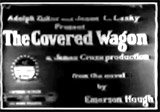


The Covered Wagon (1923), 83 minutes, D: James Cruze
One of the highest-grossing films of the year was Paramount's and James Cruze's feature-length western, an authentic-looking 83 minute film advertised as "the biggest thing the screen has had since The Birth of a Nation." A landmark silent western film and the first major western. It was an expensive effort which cost $800,000 yet brought $4 million at the box-office. The film was the historical drama of a cross-country journey of a wagon train in the mid-1800s moving westward from Westport Landing (Kansas City) on a 2,000 mile trek to Oregon, encountering harsh environmental and weather conditions (a river crossing and prairie fire), and of course, hostile Indian attacks. The tagline bragged: "Indian Attacks, Prairie Fires, Fording of Swollen Streams, a Great Buffalo Hunt, Dramatic Situations Galore --- All Go to Make Up 'The Covered Wagon'."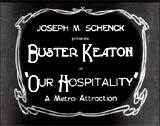


Our Hospitality (1923), 74 minutes, D: Buster Keaton, John G. Blystone
An early Buster Keaton comedy (his second independent feature) with tremendous sight gags. Set in 1830, he played son William McKay who returned home to the South (an Appalachian homestead) to claim a family inheritance - actually a run-down shack. Naturally, he fell in love with a beautiful local girl Virginia Canfield (Natalie Talmadge, Keaton's real-life wife) who was the daughter of the Canfield family - engaged in a bloody feud with his McKay family. The film included a climactic, acrobatic waterfall rescue scene in which Keaton almost lost his life when swept downstream.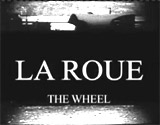

La Roue (1923, Fr.) (aka The Wheel), 273 minutes, D: Abel Gance
Gance's ambitious, drawn-out, epic melodrama (at a cost of 3 million French francs that took 5 years to complete) was billed as "A Tragedy for Modern Times." The innovative film originally ran to over eight hours but was severely cut down to five hours. Innovative techniques included shooting most of the film on location, and rapid-cutting (montages) in the train-racing sequences. Its major star Severin-Mars, died in 1921 after the year and a half long shoot. He portrayed a widowed railway worker named Sisif who adopted and raised a daughter named Norma (Ivy Close), who eventually fell in love with Sisif's own son Elie (Gabriel de Gravone) - with tragic consequences.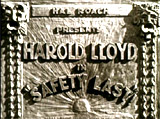


Safety Last (1923), 77 minutes, D: Fred Newmeyer and Sam Taylor
One of Harold Lloyd's classic comedies (and his most-remembered film), in the role of the Boy in the big city. This successful film is most remarkable for its thrilling, hair-raising climax - a reckless, 'safety last,' humorous stunt on the side of a twelve-story skyscraper above busy city streets. The scary sequence was deliberately shot with most of the camera compositions including views of the perilous drop behind him. In the spectacular stunt sequence, he climbed the side of the building for a publicity stunt, and hung from the hands of a large clock in order to win prize money and his girl (Mildred Davis).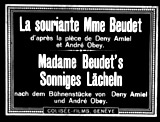

The Smiling Madame Beudet (1923, Fr.) (aka La Souriante Madame Beudet), 54 minutes, D: Germaine Dulac
A classic drama - and one of the earliest feminist films from avant-garde director Dulac. It daringly told of an intelligent and cultivated French housewife Madame Beudet (Germaine Dermoz) who was oppressed, unhappy, and restrained in her marriage to her repulsive, rude, and boring husband Monsieur Beudet (Alexandre Arquillière). Its main focus was how 'smiling' (sarcastically) Madame Beudet viewed her life and her histrionic husband. Exasperated by the major cultural differences between the couple, the Monsieur made fake attempts to commit suicide (with an unloaded gun) - but then one day, she actually loaded the gun with bullets - and then unhappily suffered remorse.